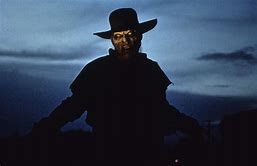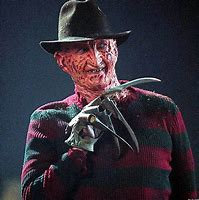Apparently, many people around the world are having a dream experience of this entity. See the article linked below. What follows is an analysis based upon the work of Emma Wilby in her work “The Visions of Isobel Gowdie” that sought to analyze the phenomenon of witchcraft in 17th Century Morayshire (North East Scotland) in terms of shared dream experience and dark shamanism.
The article accounts for the phenomenon of shared dream experience in terms of sleep paralysis informed by the psychological mechanism of social proofing (spread through social media). Social proof is the psychological tendency of allowing one’s behaviour to be informed and determined by what others around them are doing. An example is the tendency of people to ignore an unconscious beggar lying on the street. Everyone around him walks by, unconcerned for his wellbeing although he might be in dire need of medical attention. They walk by, not because they are uncaring SOBs but because everybody around them is doing the same thing triggering the psyche to believe that this is the normal response in that particular situation. What “they” say and what “they” do is a convenient guide for how to respond in everyday social situations, especially in new social situations with which one is not familiar. (For more on the concept of social proof together with other weapons of influence see “Influence: the psychology of pursuasion” by Robert Caldini.
In her work “The Visions of Isobel Gowdie”, Emma Wilby applies the concept of social proof to 17th century village society in North Eastern Scotland; the time and culture where the witch trials were at their peak. In the close knit circumstances of 17th century Scottish rural life, where the witch trials and their associated diabolical imagery were food for common gossip, it would hardly be surprising if a person dreamed of nocturnal flights to the Witches’ Sabbath, this, in turn would help to incubate similar dream experiences in others, particularly given the emotional intensity and fear generated by witchcraft belief. The dream experience would be reinforced by the accounts of others (social proof) and thus it would not be difficult to imagine a dream cult developing, centred around the idea of the witches’ sabbath and encounters with the Devil; the origin of Isobel’s coven.
In the above article, it is not difficult to see the same interlinked processes of dream paralysis and social proof at work; the experience reinforced by social proof in a way never imaginable before; through the internet in general and social media in particular.
This has particular significance for BALG; has anyone wondered why experiences of Belial, Lucifer and Azazel seem to spike on this forum when EA has released a series of videos about them on Youtube? The brain states in ritual and soul travel(the “theta gamma synch”) mimic the brain states in sleep paralysis quite closely, experiences can easily be shared on this forum (which makes it an ideal environment for social proof). And this of course opens up the age old question; how much of our experiences are genuinely “other wordly” and how much of them are sum experiences of psycho-social and neurological processes? I’m guessing that the truth of our experiences lie somewhere in the interplay between the two.



